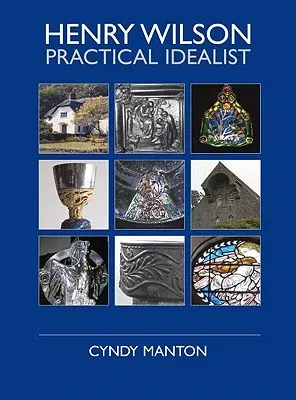Henry Wilson (1864 - 1934) worked in a highly individual style, uniting
influences from the Arts & Crafts Movement and Art Nouveau with his own
interpretation of traditional forms, symbols and nature. Drawing on
original archives, biographical details and insights from family
members, this is the first published study devoted wholly to Wilson and
his work. This book discusses examples of his work throughout the UK and
in North America, where he designed the bronze entrance doors for a
leading Boston tea importer and the great West doors of the Cathedral of
St. John the Divine, New York. Of equal impact were his exhibition
designs, and his influential teaching at the Royal College of Art, at
the Central School of Arts and Crafts, and at theVittoria Street School
for Silversmiths and Jewellers in Birmingham. He began his career as
Chief Assistant to the Gothic Revival architect J. D. Sedding, but felt
increasingly drawn to the associated arts: church furnishings,
sculpture, metalworking and jewellery. His remarkable achievements in
these fields range from the breathtaking green marble fittings of St.
Bartholomewis Church in Brighton, to the monumental Elphinstone Tomb in
Aberdeen, and from strikingly original schemes of interior decoration
and plans for a post-War craft village, to vibrant jewellery glowing
with enamel and semi-precious gems. His role as Master of the Art
Workers Guild (1917) and as President of the Arts and Crafts Exhibition
Society (1915-22) serve to confirm his significance in the context of
early-twentieth century design and education.

